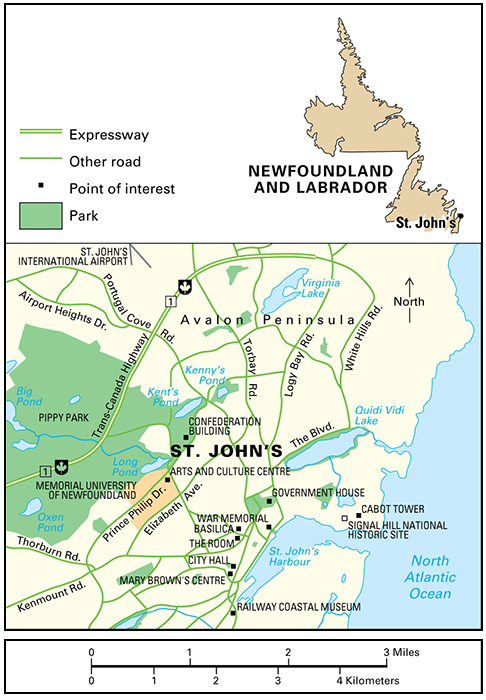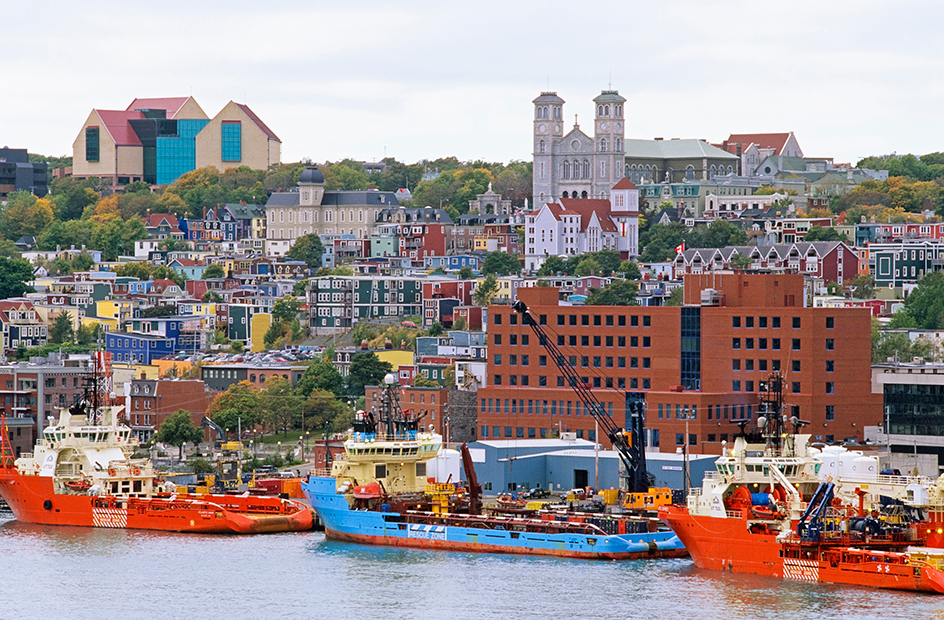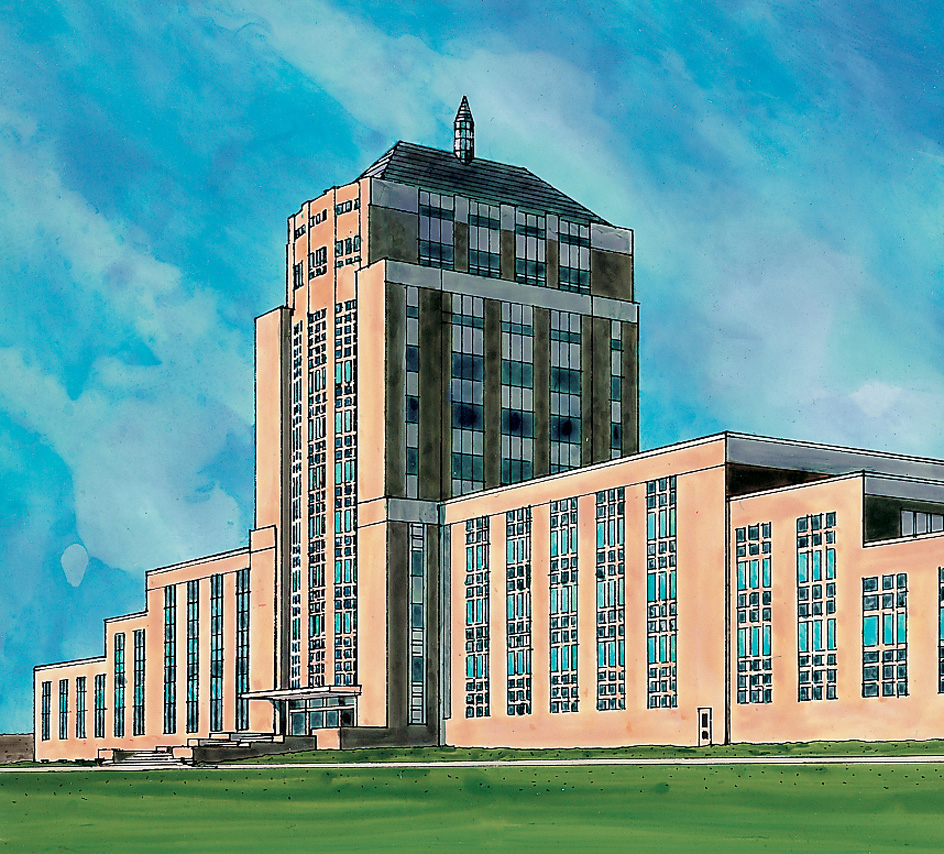St. John’s (pop. 110,525; met. area pop. 212,579) is the capital and largest city of Newfoundland and Labrador. It serves as the province’s commercial, cultural, and educational center. St. John’s lies on a well-sheltered harbor near a group of underwater plateaus called the Grand Banks. This location has made the city a busy port where ships of many countries dock to make repairs, take on supplies, and seek shelter from storms. St. John’s has been called the “service station of the North Atlantic.”

The explorer John Cabot may have been one of the first Europeans to visit the area that is now St. John’s. Some historians believe he entered the harbor in 1497. If he did, he probably named the site for Saint John the Baptist, whose feast day is June 24, the day of the possible landing. St. John’s ranks as one of the oldest inhabited areas in North America.
St. John’s lies closer to Europe than any other major North American city. As a result, it has played a part in several historic events. In 1901, for example, the Italian inventor Guglielmo Marconi received the first transatlantic wireless signal on Signal Hill in St. John’s. In 1919, the British fliers John Alcock and Arthur Whitten Brown took off from St. John’s on the first successful nonstop flight across the Atlantic.
Description.
St. John’s covers 172 square miles (446 square kilometers) on the Avalon Peninsula at the southeastern end of the island of Newfoundland. The metropolitan area covers 360 square miles (932 square kilometers). Most of the downtown area and other older parts of the city lie on hills that slope up from the waterfront. The city’s landmarks include Cabot Tower; the Confederation Building, which houses the provincial legislature; the Memorial University of Newfoundland; and the Roman Catholic basilica (cathedral).

A cultural facility called The Rooms houses the provincial archives, art gallery, and museum of Newfoundland and Labrador. The St. John’s Arts and Culture Centre includes two theaters. Signal Hill offers a spectacular view of the city, the harbor, and the Atlantic coast. The annual rowing race called the Royal St. John’s Regatta is the oldest organized sporting event in North America, dating from 1818.
Economy.
Many of the people in St. John’s work for the federal, provincial, or local government. Other important economic activities include fishing and ship servicing and repair. The St. John’s International Airport is within the city. St. John’s is the eastern starting point of the Trans-Canada Highway, which extends to Victoria, British Columbia, on Canada’s west coast.
Government and history.
St. John’s has a council-manager form of government. The voters elect the mayor, deputy mayor, and nine other municipal council members to four-year terms. The council appoints a city manager to serve as the city’s chief administrator.
Beothuk Indians probably lived on the Avalon Peninsula before Europeans arrived. John Cabot, an Italian explorer in the service of England, claimed the area for England in 1497. European fishing crews established small fishing villages there during the early 1500’s. The explorer Sir Humphrey Gilbert reached the area in 1583 and renewed England’s claim to it. The Dutch attacked St. John’s in 1665, and the French captured it in 1696, 1708, and 1762. But the English recaptured the settlement each time.
During the American Revolution (1775-1783) and the War of 1812 (1812-1815), the British made St. John’s a major naval base. In the 1800’s, the settlement became a center for sailmaking, shipbuilding, and drying and smoking fish. St. John’s had a population of about 30,000 when it was incorporated as a city in 1902. During World War II (1939-1945), both Canada and the United States had major military bases in the area. These bases brought new jobs and thousands of people to St. John’s.
What is now Newfoundland and Labrador became a province in 1949, with St. John’s as its capital. From that time until 2001, the province was officially known simply as Newfoundland. By 1950, St. John’s had a population of 53,000. After St. John’s became a provincial capital, the federal and provincial governments established many agencies there. New buildings were erected to house these agencies. The Confederation Building opened in 1959, and a new City Hall opened in 1970.

In 1979, petroleum and natural gas were discovered in the Atlantic Ocean about 200 miles (322 kilometers) east of St. John’s. The area, a section of the Grand Banks, is now called the Hibernia oil field. The discovery resulted in new economic activity in St. John’s related to the servicing of the oil exploration industry. Oil production began in late 1997.
For St. John’s monthly weather, see Newfoundland and Labrador (Climate).
